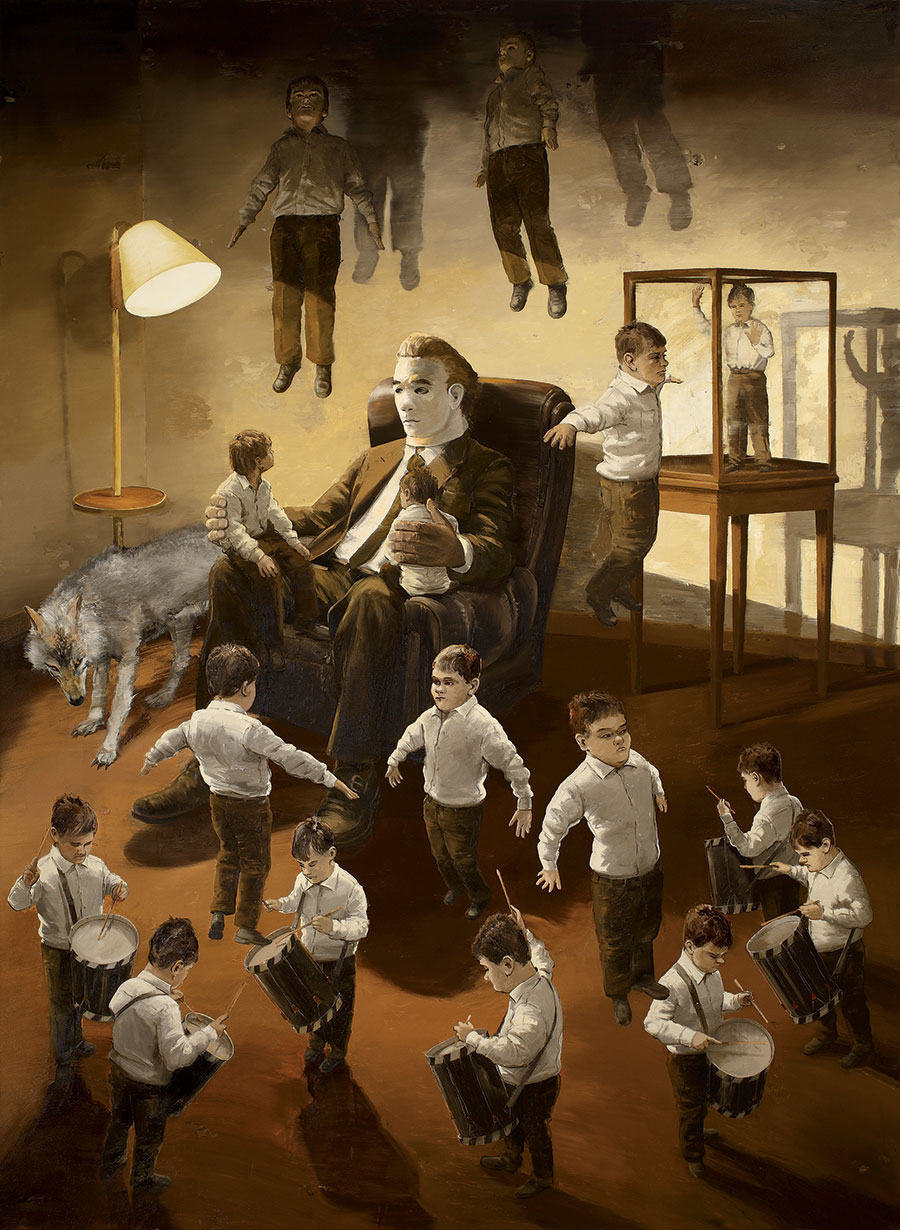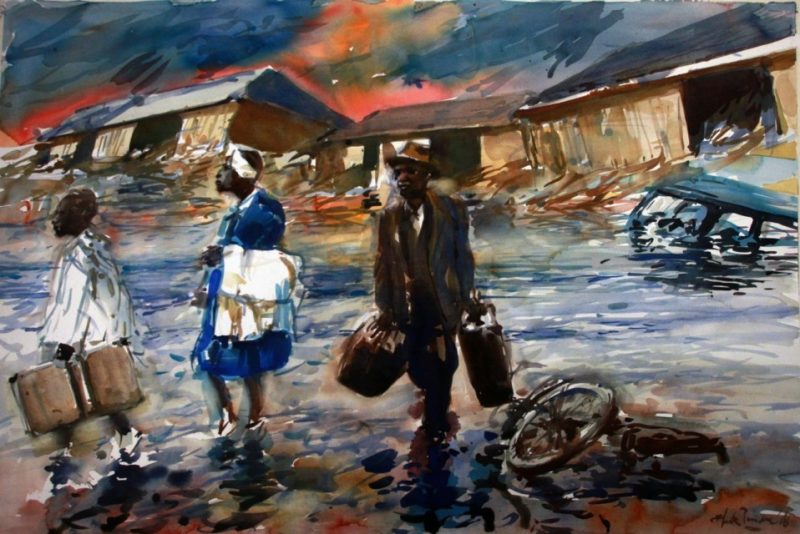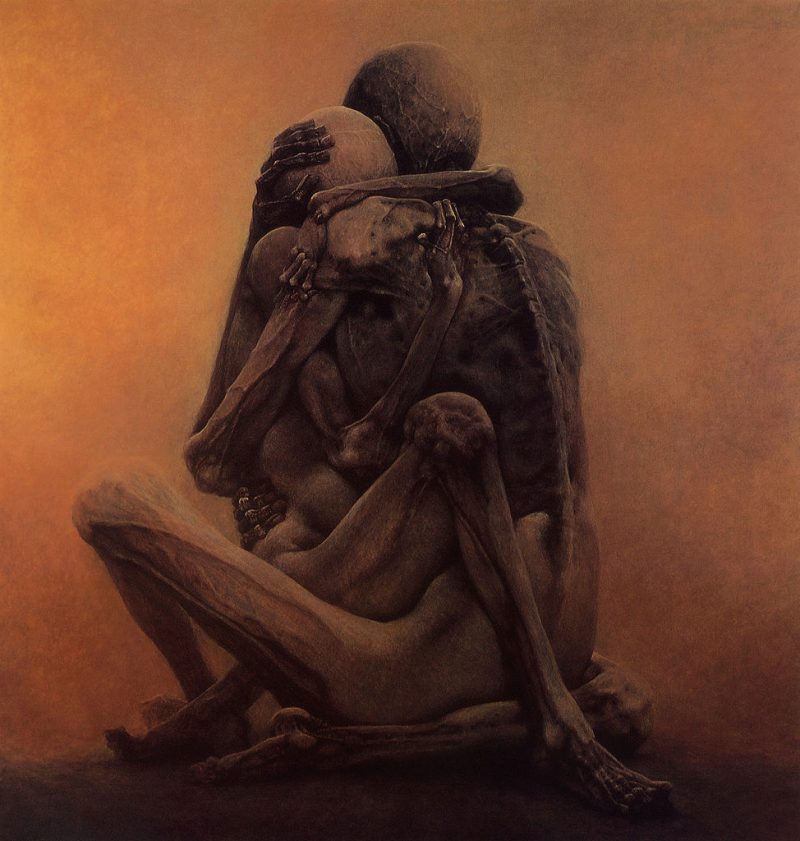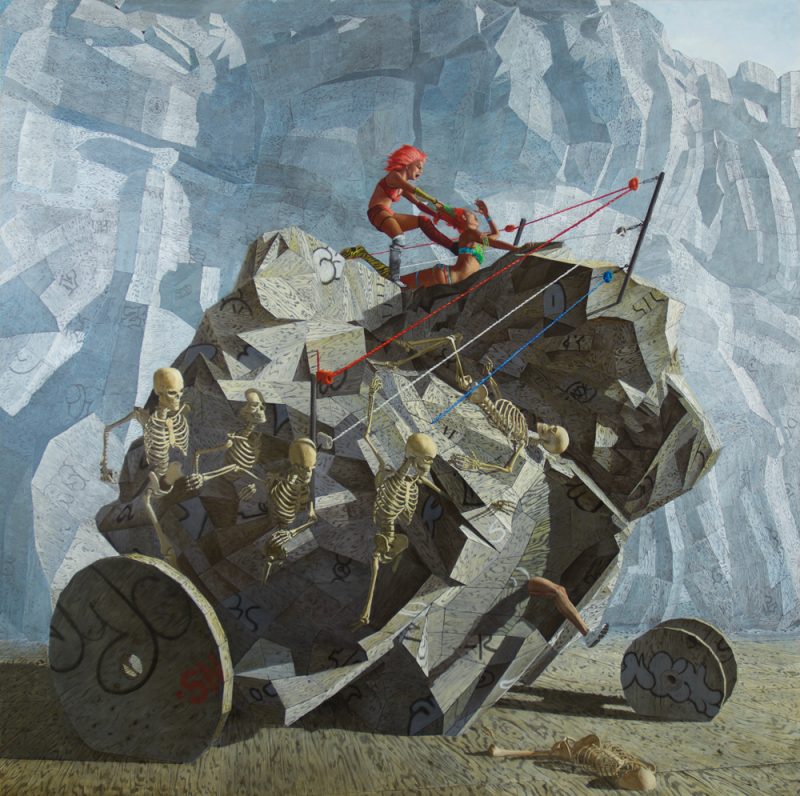In the book The Tin Drum by Günter Grass, a Polish boy in the 1920’s refuses to grow past the age of three and will resort to violence if someone attempts to take away his toy drum. The fictional story details the relationships the boy has with two fathers and this painting also deals with post-war father/son relationships, hence the recurring drummer boy at bottom.
Mäkilä says that there was a lot of secrecy then; perhaps some fathers felt ashamed about their affiliation with the Nazi party, or others didn’t know how to deal with their PTSD following WWII. The father here wears a mask representing the distance and lack of communication between him and his sons. The artist writes that “The boys represent the same boy, but they also represent all the sons of the world.” Some are able to grow up and fly the coop. Wolves are found throughout Northern European children’s stories and the wolf here likewise represents danger and unpredictability.




